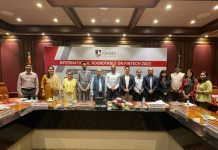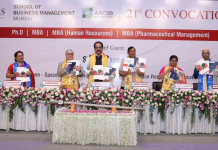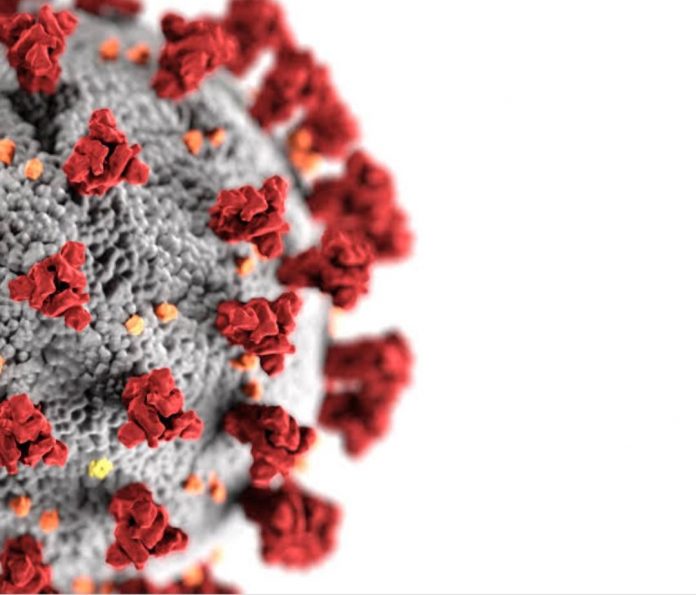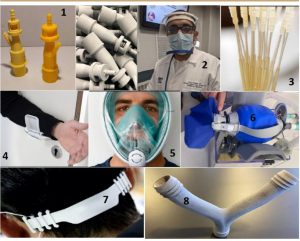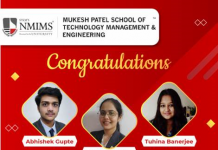COVID-19, Broken supply chains and 3D printing by Prof. Dhirendra Mishra and Dr. Asha Ingle, Department of Mechanical Engineering, MPSTME, NMIMS University, Mumbai
1. Valves for respiratory support. The original to the left, the 3D printed to the right. 2. A 3D printed face shield 3. Nasal swabs 4. 3D printed hands-free door opener prevents spread of coronavirus. Source: Materialise 5. A retrofitted snorkel gear 6 HP 3D printed parts for ventilator 7. Face mask buckle 8. Splitter for ventilator
What is common between 3D printing (3DP) and COVID-19? Nothing. One is a highly contagious respiratory disease and other is a set of manufacturing technologies. But if you google these two keywords together, you will be startled by numerous stories of people producing ingeniously-designed Personal Protective Equipment(PPE), spare parts for ventilators, nasal swabs and many other products that are in high demand owing to this global pandemic. But why is 3D printing being used to make products which are best suited to be made using continuous assembly lines and mass-scale manufacturing? Wasn’t there a joke going around regarding 3D printing that “there are several plants and mushrooms which perhaps grow faster than a 3D printed part.”
The answer to the increased use of 3D printing in the making of PPE and other related products lies in the scale and ferocity at which this pandemic has gripped the entire world including major manufacturing powerhouses like China, India and South-East Asian countries. Adding to this is the global disruption in supply chains, suspension of air cargo and imposition of export restrictions of critical supplies by many countries.
Under normal circumstances, 3D printing wouldn’t, and shouldn’t be used for these applications. Because it’s not just scale and speed which impede 3D printing, but also the questionable compliance to several quality standards which are of utmost importance in the medical devices and personal protective equipment industry. The jury is still out on whether or not to use 3D printing, whereas some have cautioned against its use, pointing out that “a 3D printed masks may do more harm than good,” and that there are also many products which do not require strict regulations.
What is 3D Printing?
3D Printing (3DP), also known as additive manufacturing (AM) is one of the most versatile and emerging futuristic technologies. Its ability to create diverse and increobjects gives it the pial to alter the very idea of conventional manufacturing and design. A typical 3D printing process starts with a computer-aided design (CAD) model, which is then transferred to a 3D printing machine. The machine then builds the physical model, layer upon layer, using a high-intensity energy source on a substrate. 3D printing offers certain distinct advantages over its conventional counterparts; a few examples include personalisation and customisation. Hence, in applications where these advantages are required, 3D Printing becomes an indispensable choice. As opposed to conventional manufacturing, where a desired feature or geometry is excavated from a given block of material, 3DP’s approach is exactly the opposite. It starts from scratch and deposits material exactly where required, thereby drastically reducing wastage and the corresponding environmental footprint.
Why the buzz now?
The global industrial growth outlook for 3D printing is very promising. According to the latest Wohlers Report, a leading American consulting firm, which has followed and reported every year on 3D printing since 1990, the additive manufacturing (AM) industry, “grew by nearly 62% over the past two years.” Every ancillary industry associated with AM also saw phenomenal growth; the materials required to 3D print have registered a growth of 40%. Its 2019 report talks about the phenomenal, “growth, development and the future of materials, applications, systems, services, and design.” Several industrial giants have made forays in AM; examples include General Electric’s acquisition of Arcam and Concept Laser, Adidas has partnered with Carbon to produce customised soles using complex designs cellular design which otherwise would be impossible to produce using any other manufacturing method, automotive giants like Ford, BMW and Porsche have used AM in several of their models.
Together with artificial intelligence (AI), advanced robotics, machine learning, Internet of Things (IoT) and cloud and fog computing, additive manufacturing is a key enabler of the fourth industrial revolution, also known as Industry 4.0. The need to integrate these technologies with conventional manufacturing methods will be imperative in the coming future. Also, the requirement to train and educate the future workforce in these technologies is going to be a challenge for industry and academic institutions. These challenges can be very strategically turned into opportunities by nations that would like to be at the forefront of the next industrial revolution.
-
A 2013 McKinsey study lists twelve disruptive technologies that will impact traditional businesses and emergence on new applications and startups based on them. 3D printing is one of them. Forbes, Deloitte, E&Y, KPMG and several other leading consulting groups have forecasted the impact these technologies will likely have on the economies and lives of millions.
3D Printing education at NMIMS8
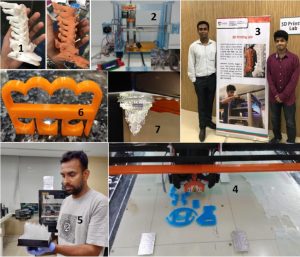
1. Student project: 3D printed anatomical surgical models 2. A chocolate 3D printer 3. Sagar J, the poster of a collaborative project with KEM hospital, Mumbai 4. Parts printed for NASA competition 5. A prototype of a part printed on stereolithography machine 6. A 3D printed handle to carry multiple bags 7. Statue of Ganesha printed on a stereolithography machine





